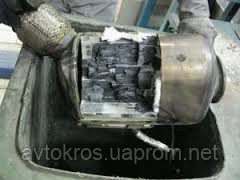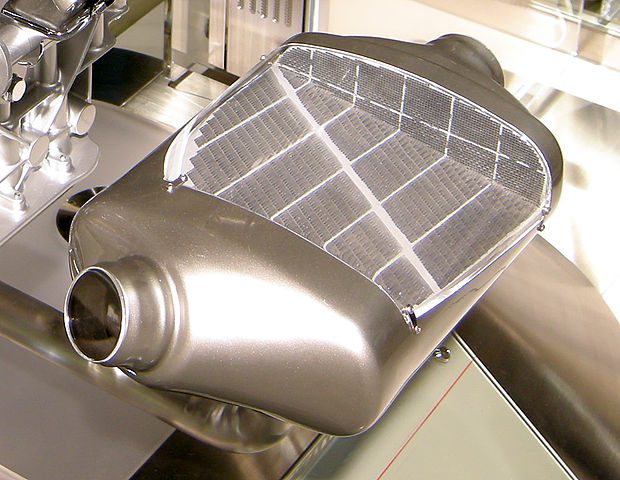
P200E catalyst system overheating, bank 1
Content
- P200E catalyst system overheating, bank 1
- OBD-II DTC Datasheet
- What does this mean?
- What is the severity of this DTC?
- What are some of the symptoms of the code?
- What are some of the common causes for the code?
- What are some of the P200E troubleshooting steps?
- Related DTC discussions
- Need more help with your P200E code?
P200E catalyst system overheating, bank 1
OBD-II DTC Datasheet
Superheat catalyst system, bank 1
What does this mean?
This Diagnostic Trouble Code (DTC) is a generic transmission code and applies to many OBD-II vehicles (1996 and newer). This may include, but is not limited to, Ford, Hino, Mercedes Benz, VW, etc. Despite the general nature, the exact repair steps may vary depending on the model year, make, model and transmission configuration.
If code P200E is stored on your OBD-II equipped diesel vehicle, it means that the powertrain control module (PCM) has detected an excessive temperature of the catalyst system for the first engine bank. Bank 1 is the engine group that contains the number one cylinder.
The catalytic system in a modern car with a diesel engine running on environmentally friendly fuel is designed to reduce harmful exhaust gases before they enter the atmosphere. Exhaust emissions consist mainly of hydrocarbons (HC), carbon monoxide (CO), nitrogen oxide (NOx) and particulate matter (soot - in diesel engines). A catalytic converter is essentially a large filter (with fine meshes) that can withstand extreme temperatures. Exhaust gases from the engine pass through it, and harmful emissions are trapped by a platinum filter element. The extreme temperatures generated inside the catalytic converter help burn harmful emissions.
The catalyst system is responsible for reducing (mostly) all other exhaust emissions, although some applications are also equipped with a NOx trap.
Exhaust Gas Recirculation (EGR) systems take another step in reducing NOx emissions. However, today's larger, more powerful diesel engines cannot meet stringent federal (US) emissions standards with just an EGR, catalytic converter and NOx trap. For this reason, selective catalytic reduction (SCR) systems have been invented.
SCR systems inject Diesel Exhaust Fluid (DEF) into the exhaust gases upstream of the particulate filter and / or catalytic converter. The precisely timed DEF injection raises the temperature of the filter element and allows it to work more efficiently. This extends the service life of the filter element and helps reduce emissions of harmful exhaust gases into the atmosphere.
Exhaust gas temperature sensors are placed before and after the catalyst to monitor its temperature and efficiency. The entire SCS system is monitored and controlled by either the PCM or a stand-alone controller (which interacts with the PCM). Otherwise, the controller monitors the O2, NOx and exhaust gas temperature sensors (as well as other inputs) to determine the appropriate timing for the DEF injection. Precision DEF injection is required to keep the exhaust gas temperature within acceptable parameters and to optimize the filtration of pollutants.
If the PCM detects an excessive catalyst system temperature (for the first row of engines), a P200E code will be stored and the malfunction indicator lamp may come on.
Cutout of a typical particulate filter: 
What is the severity of this DTC?
Any stored catalytic system codes can be precursors to a clogged exhaust system. A stored P200E code should be treated as serious and rectified as soon as possible. Catalyst damage can occur if the conditions that contributed to the code persistence are not corrected in a timely manner.
What are some of the symptoms of the code?
Symptoms of a P200E DTC may include:
- Reduced engine performance
- Excessive black smoke from vehicle exhaust
- Decreased fuel efficiency
- Other codes related to emissions
What are some of the common causes for the code?
Reasons for this code may include:
- Broken SCR system
- Defective SCR injector
- Incorrect or insufficient DEF fluid
- Defective exhaust gas temperature sensor
- Bad SCR controller or programming error
- Exhaust leaks in front of the catalyst
- Installation of non-original or high-performance exhaust system components
What are some of the P200E troubleshooting steps?
If the SCR codes are also stored, they should be cleared before attempting to diagnose the stored P200E. Exhaust leaks in front of the catalytic converter must be repaired before attempting to diagnose this type of code.
To diagnose the P200E code, you will need access to a diagnostic scanner, digital volt / ohmmeter (DVOM), infrared thermometer with laser pointer, and vehicle-specific diagnostic information source.
If you can find a Technical Service Bulletin (TSB) corresponding to the year of manufacture, make and model of the vehicle; as well as engine displacement, stored code / codes and symptoms detected, it can provide useful diagnostic information.
You need to start your diagnosis by visually inspecting the SCR injection system, exhaust gas temperature sensors, NOx sensors, and oxygen sensor harnesses and connectors (02). Burnt or damaged wiring and / or connectors must be repaired or replaced before proceeding.
Then connect the scanner to the vehicle diagnostic socket and retrieve all stored codes and corresponding freeze frame data. Make a note of this information before clearing codes and test driving the vehicle until the PCM enters ready mode or the code is reset.
The code is intermittent and can be much harder to diagnose (currently) if the PCM goes into ready mode. In this case, the conditions that contributed to the retention of the code may need to worsen before an accurate diagnosis can be made.
If the code resets, search your vehicle information source for diagnostic block diagrams, connector pinouts, connector face views, and component test procedures and specifications. You will need this information to complete the next step in your diagnosis.
Use an infrared thermometer to determine the actual temperature before and after the catalyst. Observe the scanner data flow to compare your actual results with the information on the scanner data display screen. Also compare the data from the exhaust gas temperature sensors between the rows of engines. If exhaust gas temperature discrepancies are found, check the corresponding sensors using the DVOM. Sensors that do not meet manufacturer's specifications should be considered defective.
If all sensors and circuits are working properly, suspect that the catalytic element is defective or that the SCR system is out of order.
- Make sure the DEF reservoir is filled with the correct fluid and the SCR system is working properly.
Related DTC discussions
- There are currently no related topics in our forums. Post a new topic on the forum now.
Need more help with your P200E code?
If you still need help with DTC P200E, post a question in the comments below this article.
NOTE. This information is provided for informational purposes only. It is not intended to be used as a repair recommendation and we are not responsible for any action you take on any vehicle. All information on this site is protected by copyright.